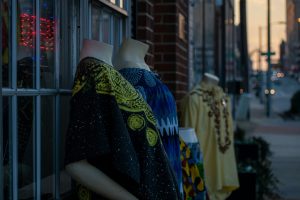Couture Revolutionizing Silhouettes with Sustainable Vision
Couture fashion has long been synonymous with luxury, elegance, and excess. The intricate and extravagant designs, handcrafted with the finest materials, have dazzled on catwalks and red carpets for decades. However, with the growing awareness of our ecological impact and the need for sustainable practices, the term “couture” is taking on a new meaning. Designers are pushing the boundaries and revolutionizing silhouettes with a sustainable vision, proving that fashion and sustainability can go hand in hand.
The Rise of Sustainable Couture
The world of fashion has been notoriously criticized for its wastefulness and disregard for the environment. However, in recent years, there has been a significant shift towards sustainable fashion. And with couture being the pinnacle of high-end fashion, it is only natural that this segment of the industry would embrace sustainability as well.
Leading the charge is legendary designer Stella McCartney, who has been championing eco-friendly and cruelty-free fashion since the early 2000s. In 2019, McCartney presented the first-ever sustainable couture collection at Paris Fashion Week, proving that it is possible to create stunning and luxurious designs with a sustainable approach.
Innovative Materials and Techniques
One of the main ways in which couture is revolutionizing silhouettes with a sustainable vision is through the use of innovative materials and techniques. With a focus on reducing waste and carbon footprint, designers are turning to materials such as organic cotton, recycled polyester, and even lab-grown fabrics.
Some designers are also incorporating traditional techniques, like hand-weaving and embroidery, into their designs, preserving cultural heritage and promoting ethical practices. But the real game-changer here is technology. 3D printing, for example, allows for precision in design, reducing material waste and increasing efficiency in production.
Merging Tradition with Modernity
Couture is all about craftsmanship and intricate detailing. And with the rise of sustainability, designers are finding ways to merge traditional techniques with modern elements, creating truly unique and innovative designs. For instance, British designer Phoebe English uses upcycled materials and traditional hand-sewing techniques to create her high-end sustainable garments.
Similarly, French designer Alexandre Vauthier collaborated with eco-innovative brand Blue of a Kind to create a capsule collection of couture pieces made from upcycled fabrics, proving that sustainability does not have to compromise on style or luxury.
The Impact on the Industry
While the concept of sustainable couture is relatively new, it is already making a significant impact on the fashion industry. Apart from the obvious benefit of reducing the industry’s carbon footprint, it is also challenging traditional notions of couture and luxury. Designers are redefining what it means to be “high-end” and proving that luxurious fashion can also be responsible and conscience-driven.
Furthermore, the rise of sustainable couture is also inspiring other segments of the industry to follow suit. High street and fast-fashion brands are incorporating sustainable practices into their production processes, and consumers are becoming more conscious of their purchasing decisions, demanding transparency and ethical production from their favorite brands.
Finding a Balance Between Couture and Sustainability
While sustainable couture is undoubtedly a step in the right direction for the fashion industry, there are still challenges to overcome. The use of organic and eco-friendly materials often comes at a higher cost, making it a luxury that not everyone can afford. Plus, the limited production of couture pieces compared to ready-to-wear means it may not have a significant impact on the industry as a whole.
However, with consumers and designers alike becoming increasingly aware and conscious of sustainability, it is only a matter of time before we see a balance between couture and sustainability. And as the demand for sustainable fashion grows, the cost of producing it is expected to decrease, making it more accessible for all.
Conclusion
Couture fashion is undergoing a transformation, fueled by the need for sustainability. Designers are reimagining traditional silhouettes with innovative materials and techniques, creating luxurious and unique pieces while minimizing their environmental impact. And with the rise of sustainable couture, the fashion industry as a whole is also being forced to rethink its practices and find ways to become more ethical and responsible. The future of couture is undoubtedly sustainable, and it’s an exciting time to see how this revolution will continue to unfold.











